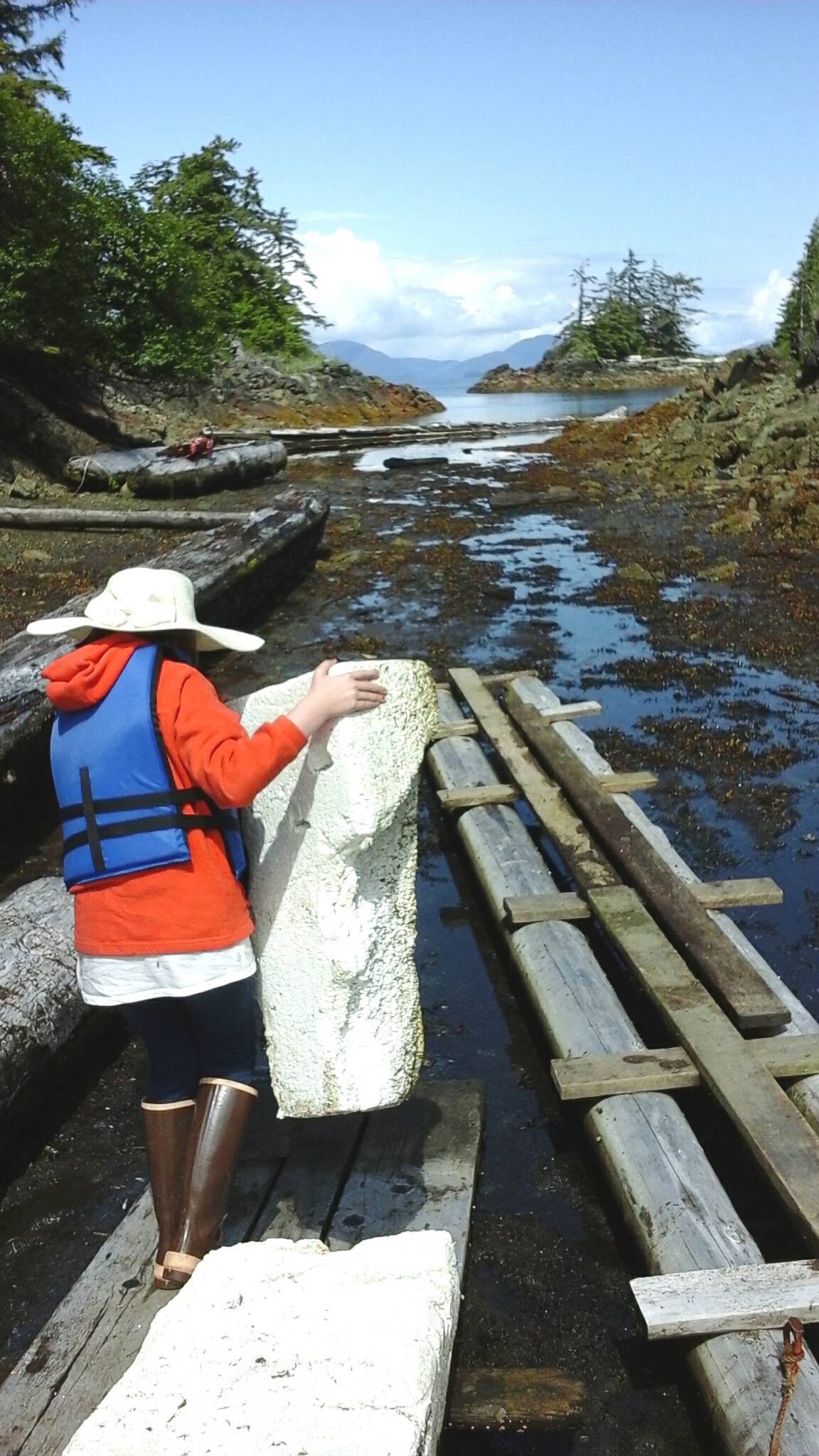“When is it my turn to use the sledgehammer?” Astraea, the 12-year-old girl we have staying with us this summer, demanded.
We were working on a new floating ramp to shore for my floathouse and she’d seen her 14-year-old brother Julian working on it with me and my dad the day before. Julian had bragged about the joys of wielding a sledgehammer and being a part of helping my cat, Katya, get to shore whatever the tide happened to be doing.
Astraea wanted to have a share in the project as well. Besides wielding the sledgehammer she helped haul foam blocks for flotation and marked boards where my dad needed to saw.
We’ve always had kids staying with us in the summers and it’s been interesting to see how much these kids, who’ve grown up in towns, used to being plugged into electronics and television for many hours of the day, fall in love with doing hands-on work out in the bush.
According to Dr. Gwen Dewar, of the website Parenting Science, hands-on learning helps kids “understand physical interactions and natural phenomena. It isn’t a passing developmental phase, or a quirk of early childhood. Rather, it seems to be a general characteristic of our brains: adults and children alike benefit from active, physical learning opportunities…. Kids who learn through hands-on activities may be at an advantage for ‘feeling’ the concepts [of how things work] and developing strong intuitions about them.”
And the best part is that kids love hands-on activities, particularly when they do them with an adult. I’m thinking of when my dad was operating a mobile sawmill and it was my job to haul the sawdust away in a wheelbarrow. This apparently looked like so much fun that every boy we had stay with us clamored to be allowed to help. My nephew Sterling’s favorite part was after the sawdust was dumped — he loved stomping it down to make it solid.
In order to meet the demand my dad built two kid-sized wheelbarrows. My nephew Ethan, in particular, took his share of the labor very seriously and worked on even after I’d call it a day. My nephew Erik’s favorite part was shoveling the sawdust. I had to slow him down a few times when my wheelbarrow threatened to topple under the load.
Firewood chores were a huge part of my life when I was growing up, but my favorite memories of it were the times, usually in the fall, when my entire family, including a nearby aunt and uncle and their two little girls, and close neighbors, would converge on my elderly grandparents’ house with saws, axes, fuel, and food.
While the women made up a huge batch of spaghetti or chili with homemade dinner roles on the side, the men set to work on the logs that my grandfather had collected over the year. There was a constant roar of chainsaws, the crack of axes hacking into rounds, and the fresh carroty smell of sawdust mixing with the scent of gasoline exhaust, seaweed, and low tide.
As fast as the guys sawed and split and tossed the wood up toward the house, we kids hauled and stacked — an entire winter’s worth of firewood under my grandparents’ front porch, and up on the porch as well.
I loved the sense of community, the guys trying to out-pace each other, joking, and ribbing each other, showing each other tricks to get a more efficient twist in splitting the rounds. Inside, the women were catching up on each other’s lives and what was going on in the community, keeping track of the youngest kids, and getting into deep conversations that ranged from the Holocaust to whatever book was currently making the rounds of the village.
Later, when I was in my 20’s and I had nephews and nieces around, we took them to do the same thing for my Uncle Herb, who was in his 70’s, and then an elderly Polish immigrant who’d been laid up with a bad back. My nephews asked me why we were doing it and then became impressed with the idea of people coming together to help someone else out. It struck me then how much they missed by living in a town where they hardly knew their neighbors and didn’t understand the concept of banding together to help out in a practical, hands-on way.
My brothers and sister and I grew up helping my dad clear the land and then build our six-bedroom house on it. None of us will forget those long treks, beside our mom, up a lowtide, rocky beach, hauling board after board of lumber he milled to the house site. We saw my mom design the 2,816 square foot, two-story house and then watched my dad put that blueprint into solid, three-dimensional form. We had a hand in every part of it, from putting in the foundation pilings, to raising entire upstairs end-walls.
Maybe it’s not surprising one of my brothers, Chris, is a journeyman carpenter and was foreman for a major construction company, and another brother, Robin, became foreman of the paint crew at a major shipyard (since moving on to a management position). My sister Megan was a partner in a successful construction business after getting her Residential Contractor’s License in Florida. And all of us kids have built our own houses from the ground (or water) up with my dad’s help.
I think growing up hands-on taught us that anything’s possible, and not to be afraid of physical work to make something happen, or to connect with and support other people in the community. I see the kids we have staying here learning that same lesson that they will carry with them for the rest of their lives.
Tara Neilson lives in a floathouse between Wrangell and Ketchikan and blogs at www.alaskaforreal.com.

